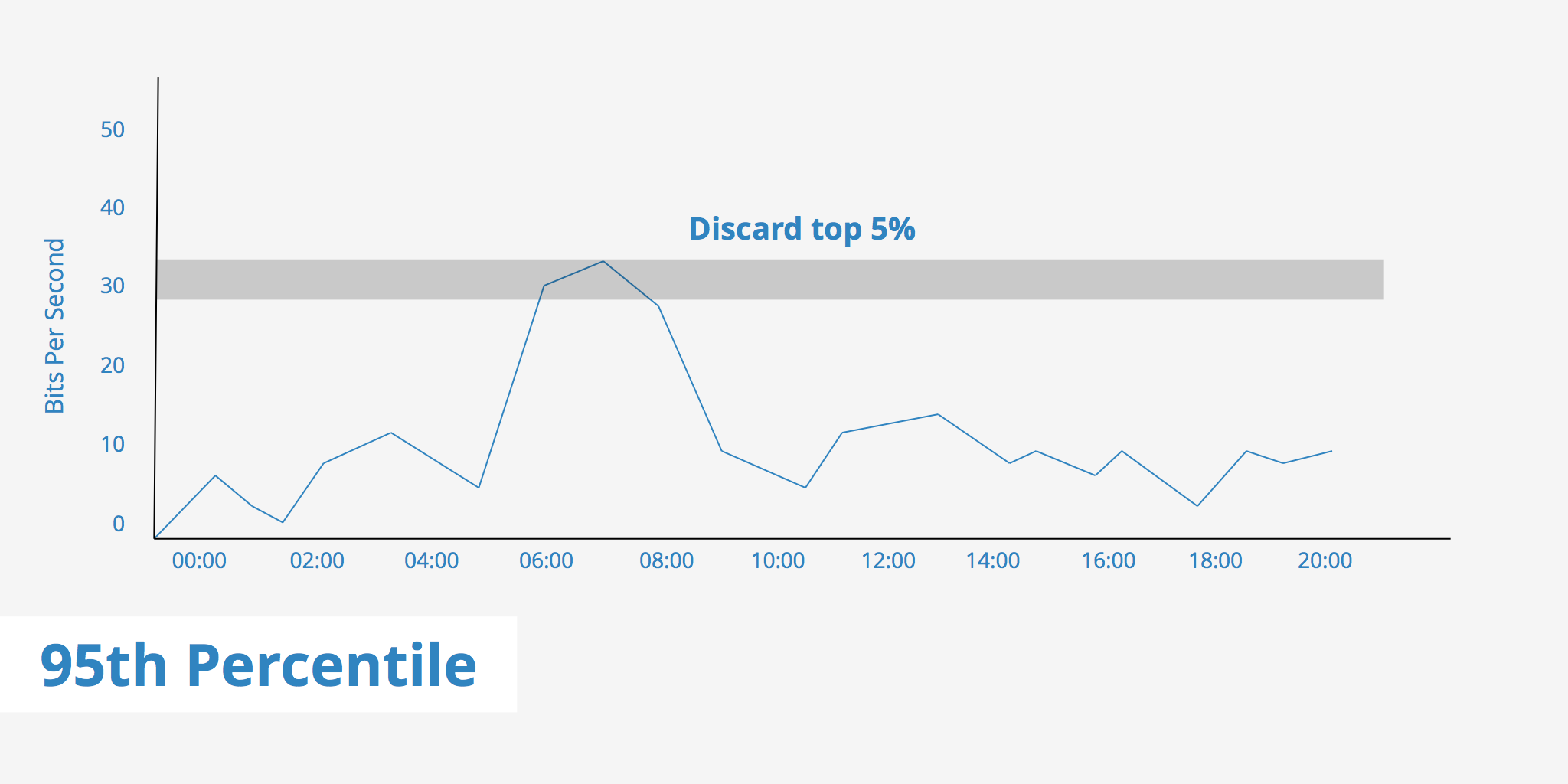95th Percentile

What is 95th percentile?
95th Percentile is a way of measuring bandwidth usage where the customer is allowed to slightly "burst" over their specified bandwidth threshold. This allows the customer to avoid paying any overuse charges while experiencing small bursts in traffic. The 95th percentile rule is based upon the notion that 95% of the time, the bandwidth usage is around or below the specified amount. The other 5% of time accounts for when the bandwidth usage is allowed to be above the specified amount.
Calculating 95th percentile
The 95th percentile is calculated on a monthly basis by collecting various data points throughout the month. The process is carried out as follows:
- The total amount of bytes transferred from inbound / outbound traffic is sampled usually every 5 minutes for 30 days
- The log is sorted in descending order, placing the highest traffic peaks at the top
- The top 5% of both the inbound and outbound traffic levels from the log is removed
- The new highest peak value (either from inbound or outbound) is used to calculate the bandwidth usage for that month
With the use of 95th percentile, the top 5% of bandwidth usage data is discarded to help smooth out the volatility of traffic bursts. This means that the top 5% of traffic or the highest usage of bandwidth for 36 hours of every month (24 hours x 30 days x 5%) will be removed no matter how high the peaks.
The example below demonstrates a monthly graph of inbound and outbound traffic usage along with the Max, Average, and Current bandwidth consumption.
In this example, the monthly maximum is 27.0 Mb/s IN and 27.1 Mb/s OUT. Discarding 5% from the MAX OUT results in 27.1 x 0.95 = 25.7 Mb/s being the 95th percentile for this particular month of bandwidth usage.
Other bandwidth metering methods
The 95th percentile is not the only bandwidth metering method being used. The following section describes two alternative metering methods.
CIR
CIR, or Committed Information Rate, is a billing method that guarantees that the buyer receives the amount of bandwidth purchased from the carrier. Although the user is guaranteed to receive the amount of bandwidth purchased, there is a hard cap in place with the CIR method. This means that there is no room for bursts in traffic.
With this method, a business must accurately determine how much bandwidth will be needed before purchase. Additionally, a company may be required to upgrade connection speeds solely to account for the bandwidth needed during traffic bursts, which can be quite costly.
Actual usage
Actual usage metering works exactly as implied. The actual bandwidth usage is calculated for both inbound and outbound traffic over a specific time period. This method can result in large costs to the customer as if there is a burst in traffic, there is no 5% rule. The customer must pay for the bandwidth used during that burst in traffic with no exception.
Depending on the scenario, this method can be subject to much higher costs. Though if there are minimal bursts in traffic it may turn out to be less expensive than using the 95th percentile method.
Summary
The 95th percentile bandwidth measurement method seeks to offer the ability for customer to handle bursts in traffic while also minimizing the costs and volatility. Although it has its benefits, 95th percentile can be disadvantageous as well in cases where there is normally small amounts of traffic with regular bursts that together account for more than 36 hours.
With different options available, a customer must decide which is best for them based on their bandwidth usage and traffic burst frequency.